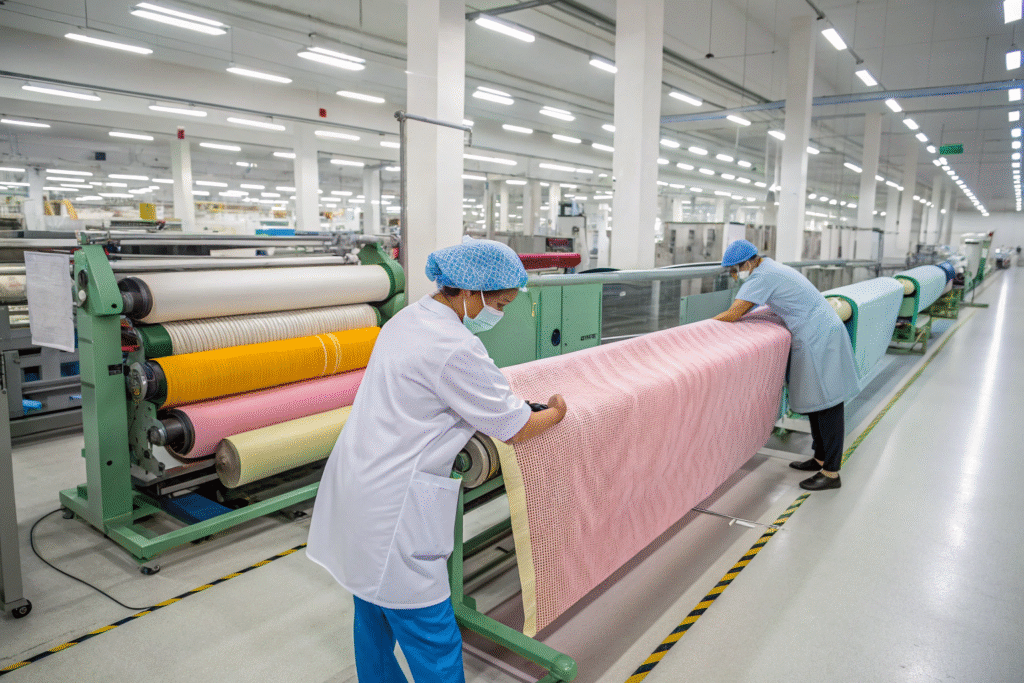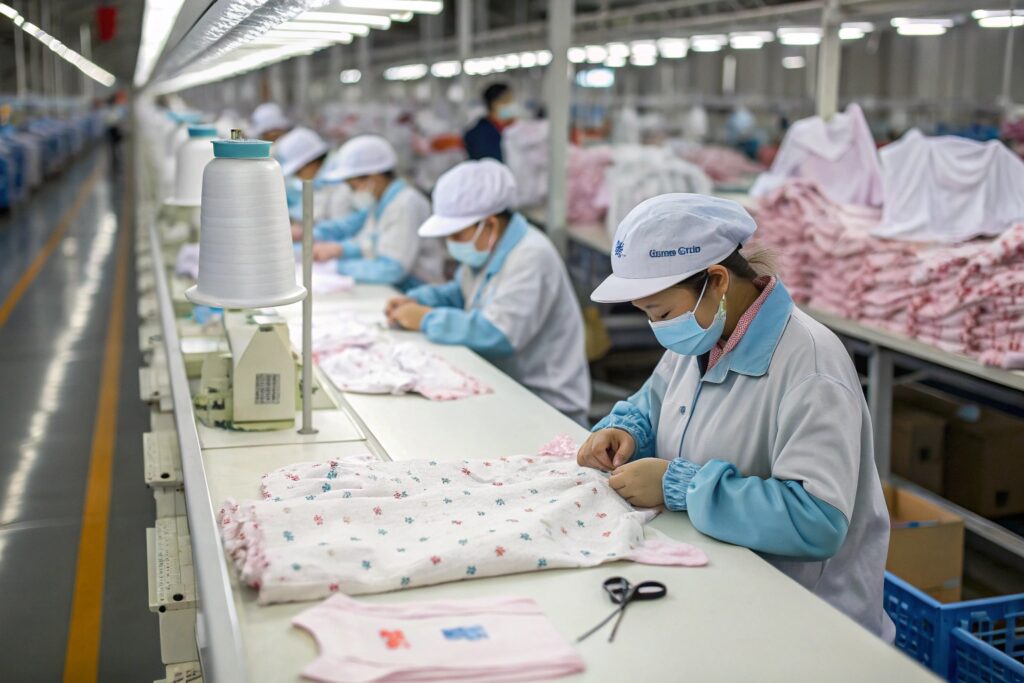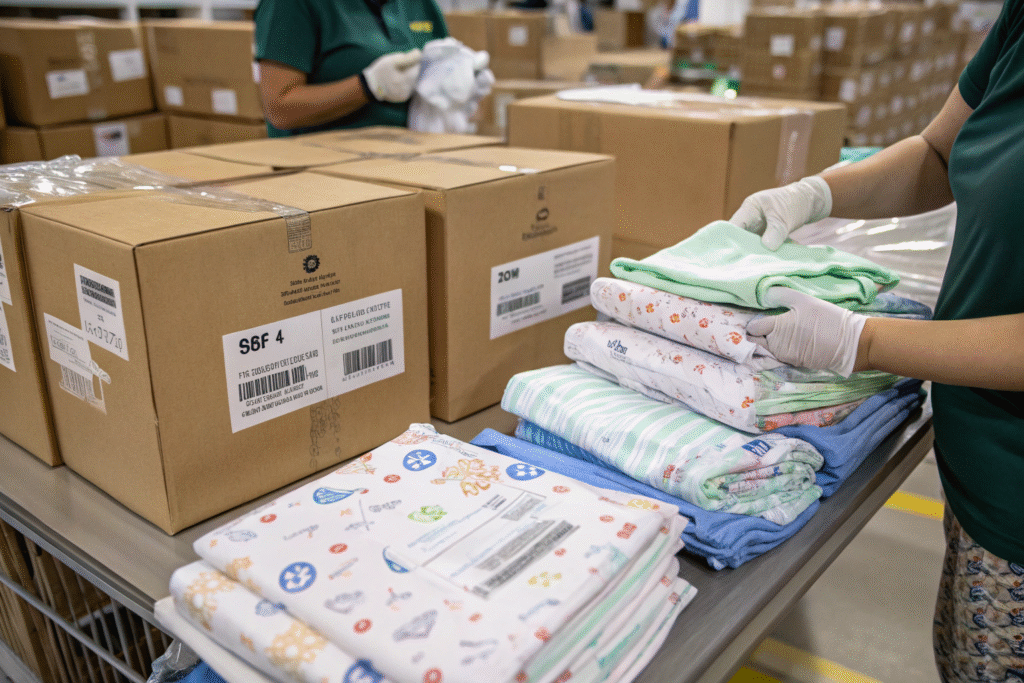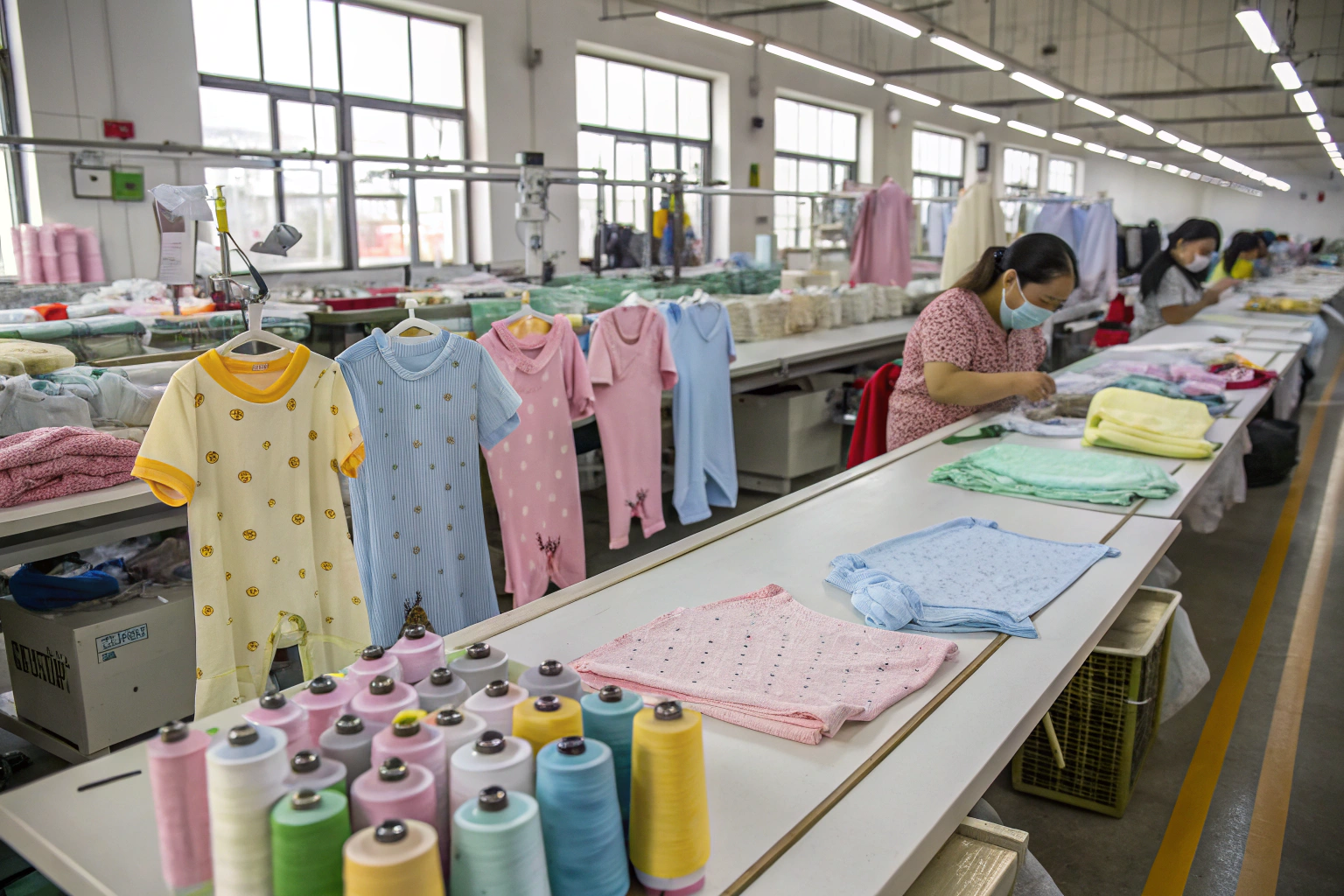When people think of baby clothes made in China, they often picture mass-produced garments with little thought. But the truth is, modern Chinese babywear production combines precision craftsmanship, international compliance, and efficient workflows designed to meet demanding safety standards.
From yarn spinning and fabric knitting to design prototyping and final inspection, baby clothes made in China undergo over a dozen regulated steps—tailored to global buyers’ quality, price, and certification expectations.
As the owner of Fumao Clothing, a trusted Chinese manufacturer for premium children's wear, I’m sharing the complete process that turns cotton fibers into cuddly clothes for newborns sold across America and Europe.
What Are the First Steps in Producing Babywear?
Before a baby onesie ever reaches a sewing machine, the process starts with fabric creation.
Step one is sourcing and processing raw fibers—most often 100% cotton, bamboo, or cotton-spandex blends—then knitting them into baby-friendly textiles like interlock, jersey, or rib.

How Is Babywear Fabric Made in China?
Most baby clothing starts with:
- Fiber Sourcing: China imports and locally produces organic cotton, often verified by GOTS or OEKO-TEX®.
- Yarn Spinning: Spinning mills twist raw fibers into fine yarn.
- Knitting/Weaving: Circular knitting machines create soft, breathable fabrics like jersey and rib, while flat knit machines make structured textiles.
Many factories—including ours—use digital dyeing systems and reactive inks, ensuring non-toxic colors safe for infant skin.
What Certifications Are Required for Baby Fabrics?
Babywear fabric must pass stringent tests. Our materials comply with:
- OEKO-TEX® Standard 100 Class I
- CPSIA (Consumer Product Safety Improvement Act for US)
- EN 71-3 (EU migration of certain elements)
We use labs like Intertek and SGS to verify compliance before cutting even a single panel.
How Do Chinese Factories Handle Babywear Design and Patterning?
Once fabric is ready, the creative and technical process begins.
Professional baby clothing vendors in China work closely with overseas brands to develop tech packs, CAD patterns, and sewn prototypes—prioritizing safety, functionality, and parent-friendly features.

What Is a Babywear Tech Pack?
A tech pack is the blueprint of a garment. It includes:
- Flat sketches with measurements
- Fabric and trim details
- Stitching and finishing specs
- Care label instructions
- Safety placement guidelines
We receive tech packs from buyers or help create them using software like Gerber Accumark and Clo3D.
How Are Babywear Patterns Made?
After tech pack approval:
- CAD pattern makers create digital templates.
- Patterns are tested with muslin or leftover fabric.
- Adjustments are made for shrinkage, stretch, and comfort.
- Grading is done across baby sizes (e.g., 0–3M, 3–6M, 6–12M).
We often collaborate via Dropbox or Wetransfer to share samples and feedback internationally.
What Happens During Sewing and Assembly?
Sewing is where fabric meets form—and where safety becomes non-negotiable.
Factories producing baby clothes must follow strict guidelines: no exposed seams, no choking hazards, and flawless finish. Production lines in China are optimized for clean, consistent stitching and snap placements.

What Machines Are Used in Babywear Sewing?
We use:
- Flatlock Machines: For soft, irritation-free seams
- Overlock Machines: For edge stitching and elasticity
- Buttonhole/Snap Attachments: For precise fastener placements
- Double-Needle Machines: For cuffs and collars
Each garment passes through 5–7 stations, depending on design complexity. For example, a romper with a side zip, snaps, and lined hood will involve more steps than a basic bodysuit.
What Quality Checks Are Performed?
At Fumao Clothing, we run 3-stage QC:
- In-line Inspection: Catch sewing errors in real-time
- Final Assembly Check: Validate correct sizing, trims
- Needle Detection: Every piece passes through a metal detector
We also provide AQL 2.5 level inspections with third-party audits upon buyer request.
How Are Baby Clothes Packaged and Shipped Internationally?
After sewing and inspection, it’s time to get those adorable pieces overseas.
Packaging must be clean, secure, and compliant with import regulations. Most babywear factories offer customized labeling, hangtags, and barcode systems—paired with international shipping expertise.

What Are the Packaging Standards for Baby Clothing?
Export packaging usually includes:
- Individual polybags (biodegradable optional)
- Size stickers and hangtags
- Bulk carton (5-ply, 50–100 pcs/carton)
- Silica packs to prevent moisture
- Carton barcodes and PO# printed outside
We also support Amazon FBA packaging with prep services (like ShipBob or Deliverr) for e-commerce brands.
How Is Babywear Exported from China?
Shipping terms vary by buyer:
- FOB: Buyer handles freight
- DDP: We manage delivery to your warehouse
- CIF: Includes sea freight and insurance
We partner with forwarders like Flexport and Zencargo for timely, traceable deliveries. Air freight is also available for urgent babywear launches.
Conclusion
Baby clothes made in China are no longer just about cost—they’re about safety, softness, and scalable customization. From fiber to freight, each step involves specialized skills, compliant materials, and cross-border coordination.
At Fumao Clothing, we help global brands build trustworthy babywear lines from the ground up—offering design support, low MOQs, certified fabrics, and full-package DDP export services. If you're ready to grow your baby clothing business, we're ready to stitch it into reality.










